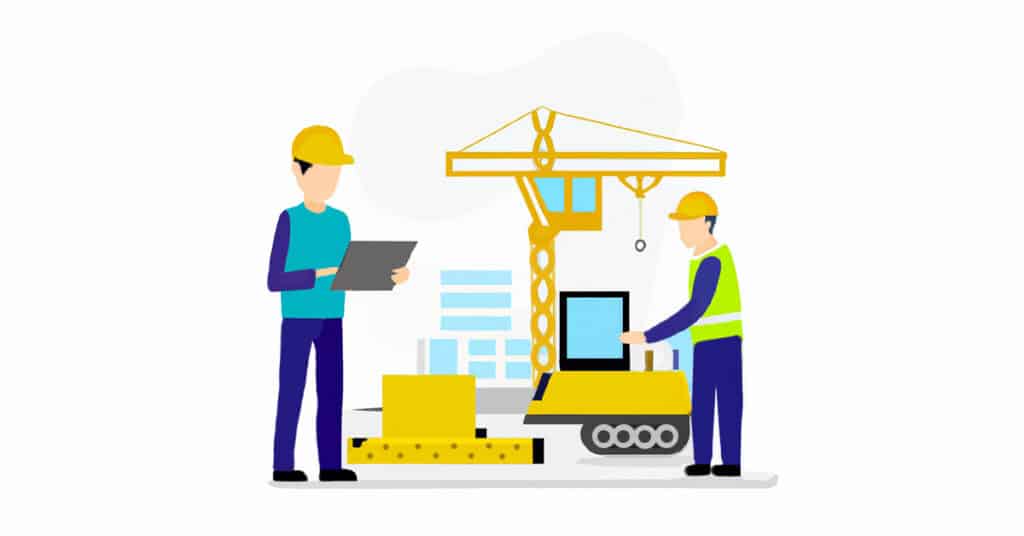Are you tired of losing sleep over last-minute project closeout chaos? It’s time to put an end to the headaches and embrace a closeout process that guarantees smooth sailing!
Whether you’re a rookie construction student or a seasoned professional, we’ve got the playbook you need—a step-by-step journey that will transform your project closeouts into seamless masterpieces.
In this article, we will dive into the essential elements of project closeout, explore its importance, and unveil a step-by-step guide to achieving flawless construction closeouts.
Project closeout is the final step of every construction masterpiece—a critical phase that ensures your hard work doesn’t end up in the shadows. It sets the stage for future success and builds long-lasting relationships with satisfied clients.
However, the road to a flawless project closeout is not without its challenges. From last-minute punch lists to communication mishaps, there’s a lot that can keep you up at night. But don’t worry, we’ll equip you with the tools to tackle every closeout obstacle with ease.
Ready? Let’s do this! 🚀
What Is Project Closeout?
Project closeout is the final phase of a construction project, where all remaining tasks and activities are completed, and the project is formally handed over to the client or end-users.
It involves final inspections, documentation, financial settlements, and ensuring all deliverables meet the project’s requirements and the client’s satisfaction.
Here’s a comprehensive breakdown of what project closeout entails.
Final Inspections and Punch Lists ✅
In this phase, it’s all about making sure everything meets the highest standards.
Inspectors will carefully scrutinize every nook and cranny, ensuring that all the required permits are in place, and the project complies with local building codes.
Any last-minute fixes or touch-ups needed will be noted on a punch list—a checklist of tasks to address before the final handover.
Documenting Every Detail 📝
From plans and drawings to warranties and manuals, keeping a comprehensive record of the entire project is crucial.
It not only helps the client understand the ins and outs of their new structure but also serves as a valuable reference for future projects.
Settling the Financial Score 💰
During project closeout, all financial aspects come under scrutiny.
This includes finalizing contracts with vendors and subcontractors, reviewing invoices and payments, and ensuring that the project remains within the agreed budget.
Training and Handover 🏢
As the project wraps up, it’s time to ensure a seamless handover for the client.
This involves providing proper training on the new systems, equipment, and facilities. We want the owner to be well-equipped for a smooth transition!
💡 Did you know? 91% of all construction projects experience delays. This can greatly affect project closeout, so it’s essential to stay on top of any and all changes during the project.
Why Is Project Closeout Important?
While you may be tempted to rush through the last phase of your project, it’s important to take your time. Ensuring a seamless project closeout is equally as important as the deliverable.
Let’s explore why project closeout is not just an afterthought, but a critical part of the construction process.
1. Ensuring Project Success
Think of project closeout as the ultimate seal of approval for your hard work and dedication. It’s the moment when all your efforts come together, and you can bask in the glory of a job well done!
A proper project closeout is the key to ensuring that the completed structure meets the highest standards of quality and safety.
By meticulously inspecting and addressing any lingering issues during closeout, you minimize the risk of costly rework and warranty claims down the road. Plus, a satisfied client means more word-of-mouth referrals and a solid reputation in the construction industry!
2. Facilitating a Flawless Transition
Picture this: You’ve just handed over the keys to your client, and they’re excited to move into their shiny new space. But wait—what if they don’t know how to operate the state-of-the-art HVAC system or the fancy security features you installed? This is where proper training and documentation come in handy!
By providing detailed manuals, warranties, and training sessions, you equip the client with the knowledge and confidence to take the reins smoothly. Remember, a happy and informed client is more likely to become a repeat customer in the future!
3. Financial Accountability
Project closeout is where financial matters hit the spotlight. From reconciling final payments to settling accounts with subcontractors and suppliers, closeout ensures all the dollars and cents are accounted for.
By dotting your financial i’s and crossing your budgetary t’s during closeout, you protect your bottom line and avoid nasty surprises that could disrupt your profits.
💡 Did you know? Rework can account for up to 9% of a construction project’s total cost. Rework can be attributed to a number of reasons, design errors, communication breakdowns, or inadequate planning.
4. Improving Future Performances
Project closeout provides the perfect opportunity to take a step back and reflect on the entire construction process. By conducting post-project evaluations and gathering feedback, you open the door to continuous improvement.
Whether streamlining communication, refining project timelines, or enhancing collaboration, the insights gained from closeout can lead to tangible benefits on future projects.
5. Reducing Liability Risks
Nobody wants to end up in a legal tango, especially after the project’s over! Project closeout plays a vital role in mitigating potential legal risks and liabilities that could arise from incomplete documentation, unresolved disputes, or safety-related issues.
By having all your contractual agreements, permits, and safety protocols in order during closeout, you shield your construction business from unnecessary legal drama and ensure a smoother journey to the finish line!
The Key Elements of Project Closeout
Now that we’ve set the stage for the importance of project closeout, it’s time to shine a spotlight on the key elements that make this process a smashing success!
From meticulous documentation to top-notch communication and rock-solid reporting, let’s dive into the nitty-gritty of what makes a seamless project closeout.
1. Documentation 📝
Proper documentation is the backbone of project closeout, ensuring that all the details and crucial information are neatly recorded and ready for the handover. Here’s what to focus on.
As-Built Drawings and Plans
For project closeout, you need to have comprehensive as-built drawings and plans that accurately reflect the final state of the construction project.
These drawings should include all modifications, changes, and additions made during the construction process, showing the actual dimensions, locations, and specifications of various components.
As-built drawings are crucial for documenting the project’s final condition, facilitating future maintenance, and ensuring compliance with building codes and regulations.
Manuals and Warranties
You need to have all relevant manuals and warranties related to the completed construction, including equipment manuals, operational guides, maintenance instructions, and any product warranties.
These documents ensure that the client has all the necessary information to operate and maintain the finished project successfully, promoting a smooth handover process and long-term satisfaction.
Permits and Regulatory Compliance
You need to ensure that all necessary permits and regulatory compliance requirements are in place and up-to-date.
This includes confirming that all building permits, environmental permits, zoning approvals, and other relevant licenses are obtained and in accordance with local, state, and federal regulations.
Additionally, you must ensure compliance with safety standards, building codes, and any specific industry guidelines applicable to the project. Proper documentation of permit approvals and compliance is crucial for a successful project closeout and to avoid any legal or regulatory issues down the road.
2. Communication 🗣️
Communication is the central pillar of project closeout. From the construction crew to the client, here’s how to keep the communication spotlight shining.
Regular Meetings
Host regular meetings with the client to update them on progress, address concerns, and keep them in the loop. Transparency is the name of the game!
Subcontractor and Supplier Coordination
Maintain clear lines of communication with subcontractors and suppliers to ensure a smooth handover and address any last-minute hiccups.
Client Feedback
Embrace client feedback! Gather their input throughout the project and during closeout to identify areas for improvement and future collaboration opportunities.
3. Reporting 📊
Numbers don’t lie, and when it comes to project closeout, reporting provides financial clarity for everyone involved. Here’s how to handle the reporting frenzy.
Budget Analysis
Carefully review all financial records and expenditures related to the project, compare them against the initial budget, and identify any variances or discrepancies.
Analyze the actual costs incurred during the project, including labor, materials, equipment, and overhead expenses.
This assessment will help ensure that the project was completed within the allocated budget and identify areas where cost-saving measures were successful or where adjustments may be needed.
Project Timeline Review
To conduct a project timeline review for project closeout, thoroughly analyze the initial project timeline, comparing it with the actual progress and completion dates of each milestone and task. Identify any delays, discrepancies, or changes that occurred during the construction process, and document the reasons behind them.
This review process helps in evaluating project performance, ensuring adherence to schedules, and identifying valuable insights for future projects.
Risk Assessment
Assess the risks faced during the project and the measures taken to mitigate them. This will help future projects navigate potential obstacles with ease.
4. Lessons Learned ✍️
Project closeout is a golden opportunity to learn, grow, and perform even better on the next project
Post-Project Evaluation
Gather the team and the client for a post-project evaluation session. Celebrate successes, discuss challenges, and explore areas for improvement.
Feedback Loop
Keep the feedback loop open with your team and clients. Encourage them to share their insights and suggestions, and make sure that every voice is heard.
Best Practices Repository
Create a treasure trove of best practices based on the lessons learned during closeout. This knowledge bank will guide future projects toward greatness!
5. Legal Shield 🛡️
Nobody likes a legal showdown, but project closeout can act as your shield of protection. Here’s how to stay ahead of potential legal woes.
Contractual Compliance
To ensure contractual compliance for project closeout, it is crucial to thoroughly review and understand all contractual obligations and requirements.
Implement a systematic approach to track and verify that each deliverable, task, and documentation aligns with the agreed-upon terms and conditions outlined in the contract.
Regular communication with all stakeholders and meticulous documentation of progress and completion will help ensure that the project closeout process adheres to the contractual obligations, minimizing the risk of disputes and maximizing client satisfaction.
Safety Documentation
Keep a meticulous record of safety protocols, inspections, and training to demonstrate your commitment to a secure construction process.
Dispute Resolution
If any disputes arise during closeout, address them promptly and professionally. A little negotiation can go a long way in avoiding courtroom drama!
Your Step-By-Step Guide To Project Closeout
In this section, we’ll take you on a step-by-step journey to a masterful project closeout!
From conducting punch and final inspections to releasing those valuable project resources, we’ve got you covered.
1. Conduct Punch & Final Inspections 🕵️♂️
Before you wrap up your construction project, it’s time to conduct those all-important final inspections.
Here’s how to nail this crucial step.
Inspect with Eagle Eyes
Leave no brick unturned! Scrutinize every detail, from the foundation to the rooftop, checking for defects, compliance with regulations, and any unfinished business.
Create a Punch List
Just like a to-do list, create a punch list that includes all the tasks to be completed before the final handover.
Fix, Fix, Fix
Once the punch list is ready, fix all the identified issues. This is your chance to shine and wrap up any loose ends!
2. Transfer Project Deliverables 🤝
The project deliverables are your pièce de résistance—the most important aspect! Here’s how to make the handover seamless.
Double-Check the Deliverables
Review the original project scope and requirements to ensure all agreed-upon deliverables are met. Cross-reference the project documentation and communication records to verify that all deliverables have been completed to the client’s satisfaction.
Plan the Handover
Schedule a final walkthrough to showcase the completed project and address any client concerns. Prepare all necessary documentation and deliverables, ensuring clarity and transparency during the handover process.
Train the End Users
Remember, the client may not be familiar with all the new systems and technologies you’ve installed. Provide training sessions to equip them with the knowledge to operate everything smoothly.
3. Release Project Resources 🚀
As the project reaches its end, it’s time to bid farewell to the hardworking resources that brought it to life.
This step involves wrapping up the project’s operational aspects and releasing those valuable resources to new owners.
Equipment and Tools
Make sure all equipment and tools are accounted for and properly maintained. Prepare them for their next mission, whether it’s a new project or some well-deserved rest in storage.
Personnel and Teams
As the project winds down, redistribute your talented workforce to new projects or give them a well-earned break. Don’t forget to celebrate their hard work and dedication!
Contractual Closures
Close out all contracts with subcontractors, suppliers, and other project partners. Tie up any financial loose ends, and make sure everyone leaves the project with smiles on their faces.
4. Archive Project Documentation 🗄️
Make sure to keep accurate records of the project—the documentation that captures every triumph, challenge, and innovation.
Here’s how to create a comprehensive project archive.
Digital and Physical Copies
Create both digital and physical copies of all relevant documents, from contracts and permits to drawings and communication records. Keep them secure and accessible, just in case you need to find them later.
Organize and Index
Like a librarian curating a collection, organize the documents in a logical manner and create an index for quick reference. You’ll thank yourself later when you need to revisit that critical piece of information!
Preservation Plan
Identify all essential project documents and determine their long-term storage needs. Choose appropriate formats and storage solutions to ensure the documents remain accessible and well-preserved for future reference.
5. Finalize Financials 💸
It’s time for your budget review and to settle all outstanding invoices with vendors and subcontractors. In this step, you must make sure that all financial accounts related to the project are closed.
Final Budget Review
Carefully analyze all financial aspects of the project, including expenses, revenues, and any outstanding invoices. Compare the actual expenses with the initial budget and resolve any discrepancies.
Invoice Settlement
Settle all outstanding invoices with vendors, suppliers, and subcontractors. Leave no financial stone unturned and ensure everyone is paid promptly and fairly.
Close Financial Accounts
After you review the project budget and settle outstanding invoices with vendors and subcontractors, ensure all financial transactions are accurately accounted for. Once all financial tasks are completed and reconciled, officially close the financial accounts related to the project.
6. Obtain Client Acceptance and Sign-off 🤝
It’s the moment you’ve all been waiting for—the sign-off from the client! Client acceptance and sign-off mark the successful conclusion of your construction journey and the beginning of a lasting relationship.
Here’s how to receive well-deserved applause.
Final Walkthrough
Accompany the client on a final walkthrough, showcasing the completed project and addressing any last-minute concerns. Be their construction tour guide, making sure they feel confident and delighted!
Client Sign-off
Present all necessary project documentation, ensuring they understand the deliverables and have no lingering questions.
Follow-Up and Gratitude
After the sign-off, follow up with the client to express your gratitude and ensure they’re satisfied with the entire construction journey. A little appreciation goes a long way in building lasting relationships!
Free Project Closeout Checklist
As we reach the end of the project closeout guide, we’d like to provide you with a roadmap to navigate the terrain of project closeout like a pro.
What Is a Project Closeout Checklist?
Think of a project closeout checklist as your very own construction GPS—a comprehensive guide to ensure nothing falls through the cracks as you reach the end of your construction journey. It’s a document that lists all the crucial tasks and steps required to wrap up the project with finesse.
👉 Download your free project closeout checklist.
Benefits of Using a Project Closeout Checklist
Wondering why this checklist is a game-changer? Here are the top benefits of having a project closeout checklist by your side.
1. Organization 🗂️
From financial documents to safety reports, a project closeout involves a ton of paperwork. With a checklist, you’ll never misplace a vital document again. Everything is neatly laid out, helping you stay organized like a pro.
2. No Loose Ends 🎈
You don’t want to be caught presenting the client with a completed project, only to realize that you missed an essential task.
With a closeout checklist, you’ll tie up every loose end, leaving no room for unpleasant surprises.
3. Streamlined Communication 🗣️
In the construction world, communication is key! A well-crafted closeout checklist ensures that everyone on the team is on the same page.
5. Time and Cost Savings ⏰
The checklist will help you avoid costly delays and unexpected expenses. By having a clear roadmap of tasks, you’ll breeze through project closeouts with efficiency and precision.
Ready for a smooth project closeout? Download your free project closeout checklist here.
Streamline Project Closeout With Workyard’s Field Software
Ready to elevate your project closeout game to new heights? Try Workyard—the ultimate tool for construction success. With Workyard in your pocket, you’ll be the master of job site communication, transparency, and flawless project closeouts.
Let’s dive into how Workyard can revolutionize your closeout process.
Improve Job Site Communication and Transparency
Bid farewell to those communication hiccups and embrace seamless interaction with Workyard’s field software. Keep everyone in the loop, from the field crew to the client, and maintain a crystal-clear line of communication throughout the closeout process.
“Joining Workyard has allowed our team of subcontractors to more effectively communicate and track expenses, projects, and timesheets. It’s created clarity and ease for our company as well as our subcontractors.”
Create and Assign Task Lists—All in One App
Say goodbye to app-hopping and lost text messages! With Workyard, you can create and assign task lists directly within the same app you use for time tracking.
Empower Workers with Detailed Checklists
Empower your construction heroes with detailed checklists to ensure they get the job done right—the first time! Workyard enables you to customize checklists based on project requirements, giving your crew the blueprint for closeout success.
Attach Notes, Files, and Photos for Clarity
They say a picture is worth a thousand words. Attach notes, files, and photos directly to punch lists to provide your crew with crystal-clear instructions. No more guessing games—just flawless execution!
Track Punch Progress in Real-Time
Oversee multiple projects with Workyard’s real-time task progress tracking. Monitor each task’s status as it unfolds, ensuring nothing gets overlooked during the closeout process. Workyard keeps your project on track and on time.
Document and Archive for Future Reference
With Workyard, you’ll never lose sight of your construction history. Document every step of your project closeout and securely archive all relevant information for future reference.
Ready to utilize Workyard for your project closeouts? Sign up for a free trial of Workyard today.




